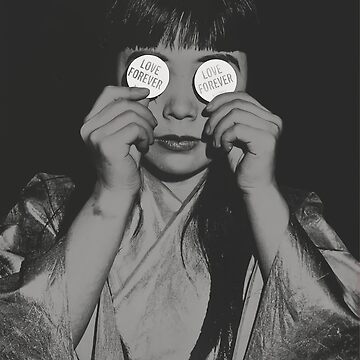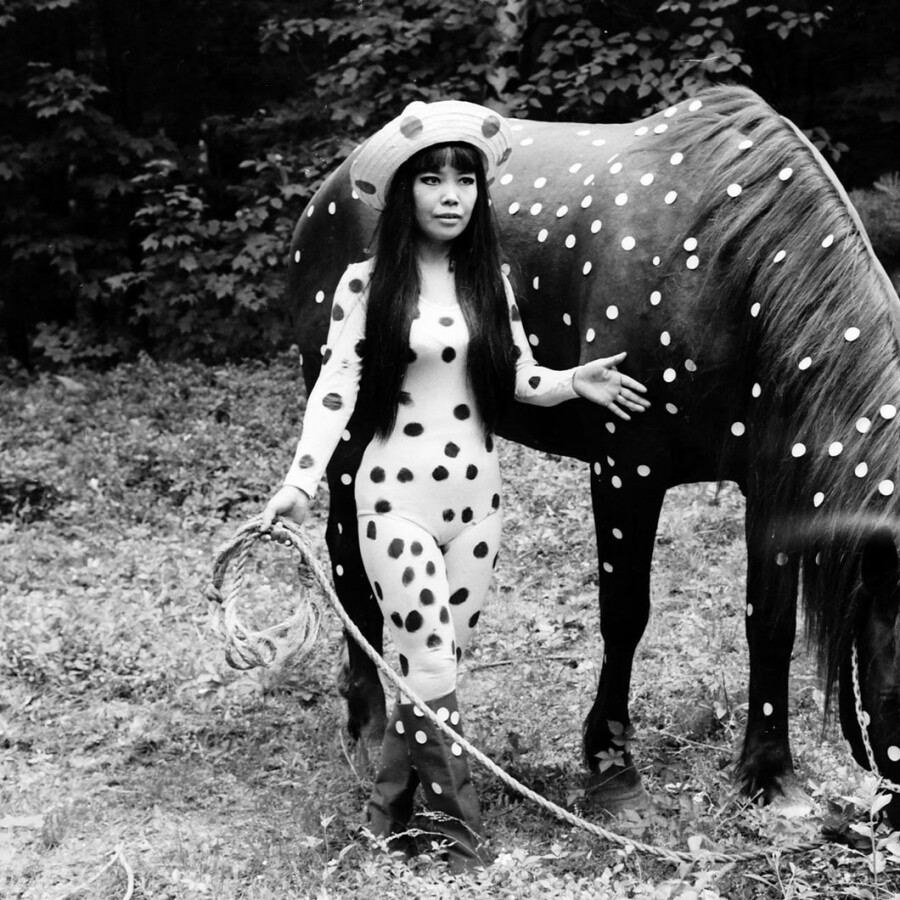Obsession with Self-Destruction: How Yayoi Kusama's Art Delves into the Nightmare of Mental Illness
“Become one with eternity.
Become part of your environment.
Take off your clothes.
Forget yourself. Make love.
Self-destruction is the only
way to peace.”
— Yayoi Kusama
To Loose Oneself in Infinity
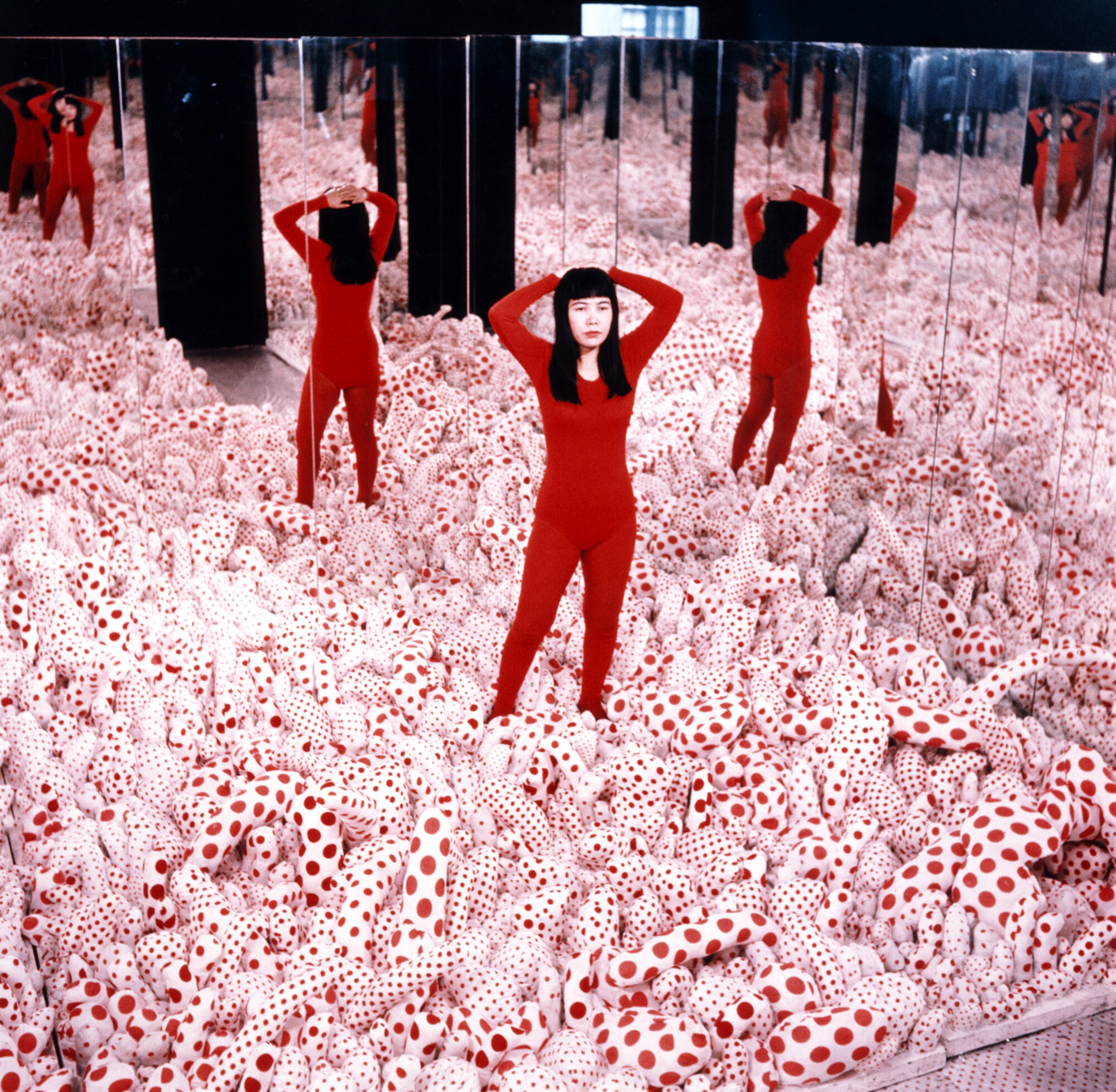
One of Kusama's most intriguing works is the installation "Infinity Mirror Room – Phalli’s Field" (1965), showcased at places like the Hirshhorn Museum in Washington. This labyrinth of mirrors filled with hundreds of stuffed, polka-dotted phalluses represents deep fears of sexuality. As a child, Kusama was forced by her mother to spy on her father during his encounters with lovers. This traumatic experience instilled in her a deep aversion to sexuality, significantly influencing her artwork.
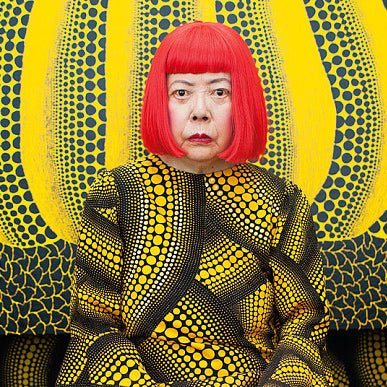
Despite her struggles with mental illness, Yayoi Kusama transformed these unsettling experiences into a force that drove her creativity. Her art, both fascinating and disturbing, is a testament to the strength of the human spirit and the ability to transcend the mind's boundaries. Kusama not only created her unique world full of dots and infinity but also became an icon of contemporary art, whose works inspire and provoke viewers worldwide. These elements make her art so extraordinarily fascinating, continually attracting throngs of visitors to museums and galleries across the globe.
Let us explore who she is and how she journeyed through a life full of suffering and battle with mental illness to reach the pinnacle of contemporary art fame, all while drawing viewers into the inner world of her nightmares and fears.
The Art of Yayoi Kusama on the Global Stage of Contemporary Art
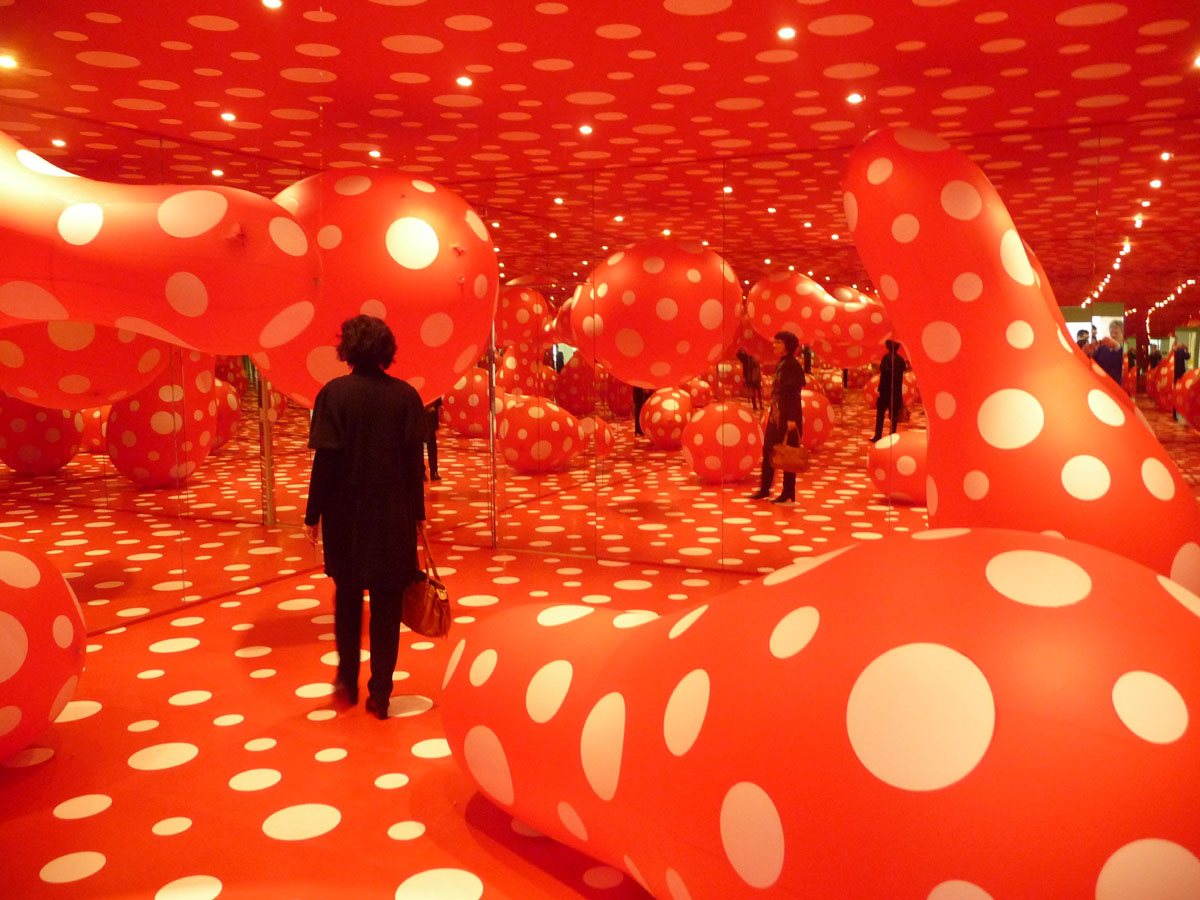
The popularity of her works, especially installations like Infinity Mirror Rooms, has significantly risen in recent decades, attracting millions of visitors globally. These installations, which create the illusion of infinity using mirrors and lights, have become icons of contemporary art, offering viewers an immersive experience that is both fascinating and unsettling. Kusama has received numerous awards and honors, and her works are part of the collections of major museum institutions, affirming her significance and lasting impact on the world of contemporary art.
Early Life and Artistic Beginnings (1929-1956)
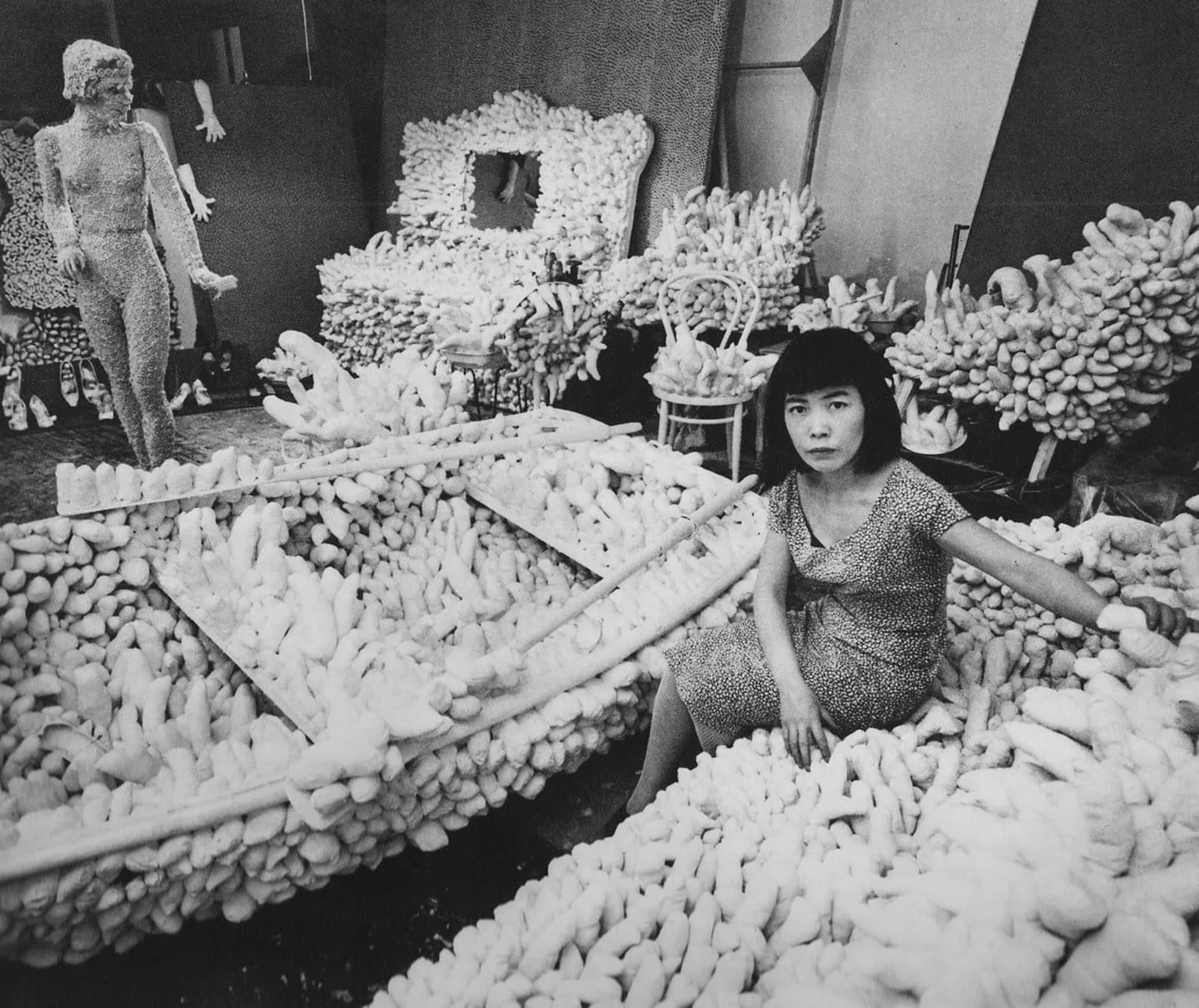
During World War II, young Kusama was forced to work in a factory producing parachutes for the Japanese army. These traumatic experiences, combined with the bombing of the country by Allied forces, had a profound impact on her psyche, deepening her fears and sense of threat. Her art began to take shape, reflecting the dark aspects of her experiences.
One of Kusama's early and most significant works is "Accumulation of the Corpses (Prisoner Surrounded by the Curtain of Depersonalization)" from 1950. This painting, full of dark, expressive forms, resembles a circle of hell, where destroyed trees symbolize the loss of life and hope. This work, like many others from this period, reveals the deep psychological suffering of Kusama, which became an integral part of her artistic expression. Kusama used art as a means to understand and process her traumas, creating works that were both personal confessions and universal reflections on the human condition.
Years in New York and Career Development (1957-1973)
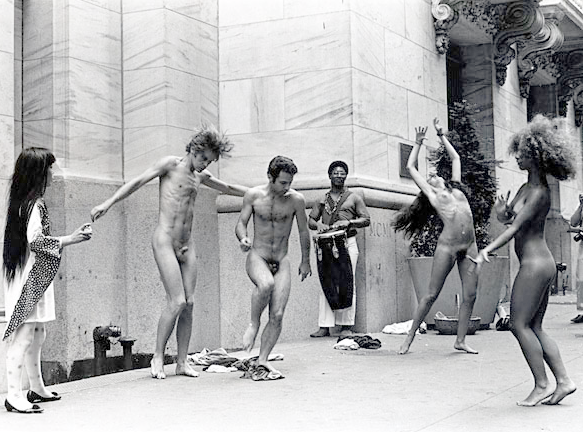
In New York, Kusama developed her unique approach to art, quickly drawing attention. In 1959, she created her famous series of paintings "Infinity Net," characterized by monochromatic, organic patterns resembling nets. These works, often of impressive size, like the 10-meter canvas, became symbolic of her creativity, blending Eastern aesthetics with the influences of Western abstract expressionism.
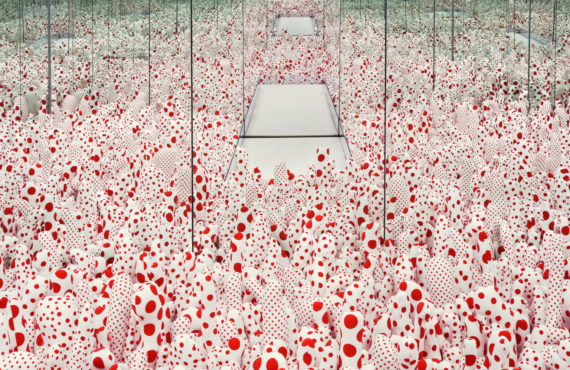
During her time in New York, Kusama struggled with severe mental health issues, including hallucinations and depression. Her art became a form of therapy, a way to understand and process her internal struggles. Kusama's works often reflect her obsessive thoughts and fears, transforming them into hypnotic and deeply personal artworks. Throughout her life, the artist openly spoke about her illness, making her art even more authentic and moving. Kusama not only found a way to express herself but also engaged in a profound dialogue with audiences about mental health and art as a tool for healing.
Return to Japan and Continuation of Creativity (1973-Present)
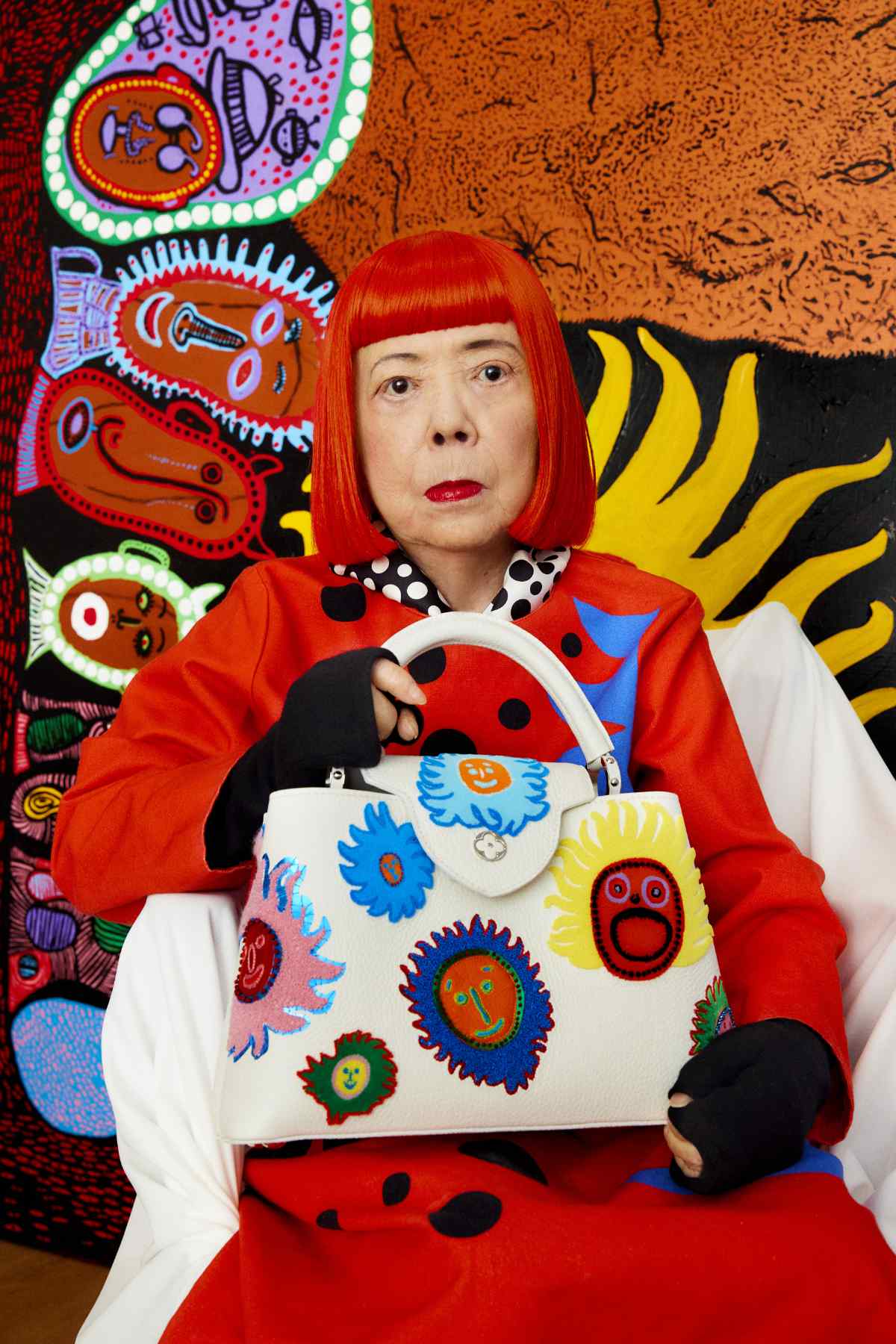
In the 1980s and 1990s, Kusama continued experimenting with form and materials. One of the most significant works of this period is the installation "Mirror Room (Pumpkin)" from 1991, which was exhibited at the Venice Biennale in 1993. This installation, consisting of orange pumpkins covered with characteristic dots, became a symbol of her later work and contributed to the further growth of her international recognition. Pumpkins became one of the most important motifs in her art, symbolizing both childhood and fears related to the inevitable passage of time.
In recent decades, Kusama has become not only a recognized artist but also a pop culture icon. Her collaboration with luxury brands, such as Louis Vuitton, has brought her even greater popularity. Fashion collections inspired by her characteristic style of dots and bright colors have gained worldwide acclaim. Kusama remains actively involved in the art world, organizing exhibitions that attract millions of visitors. Her works, including Infinity Mirror Rooms installations, are consistently showcased in major museums and galleries, confirming her status as one of the most important figures in contemporary art.
Dots and Infinity
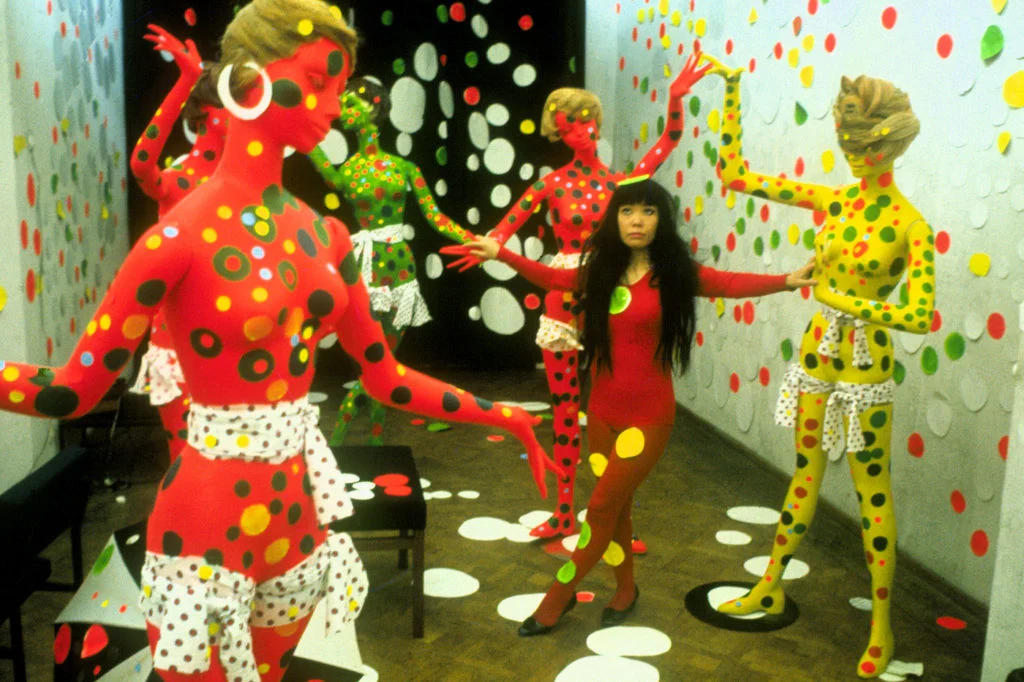
Dots in Kusama's work often symbolize her struggles with feelings of depersonalization and fear of self-annihilation. As a child, experiencing hallucinations, Kusama saw surrounding patterns and shapes that seemed to engulf and dissolve her in infinite space. She translated this experience into her art, creating works in which dots expand into infinity, as seen in her famous "Infinity Mirror Rooms." These installations allow the viewer to immerse themselves in the illusion of infinite space, where one's reflection repeats endlessly in mirrored walls, creating a sense of infinity.
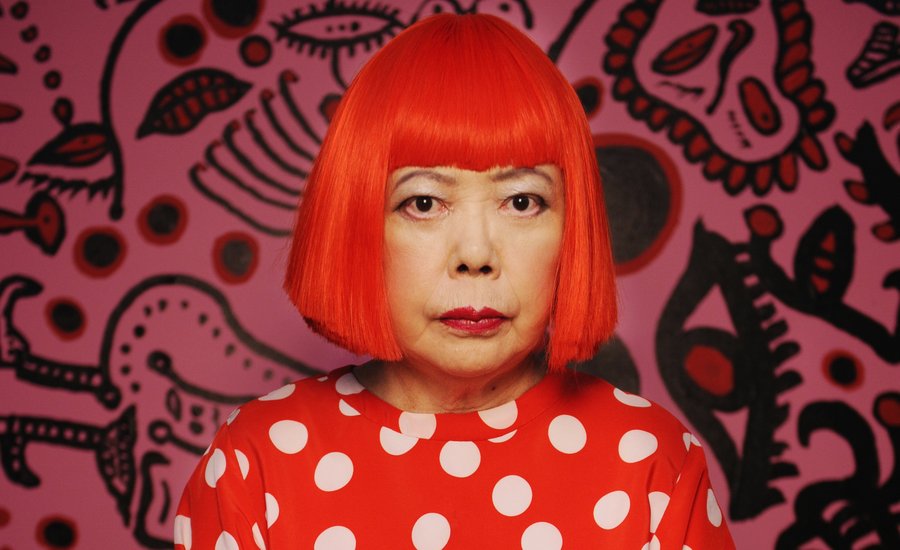
For Kusama, art is a form of therapy and a way to transform internal fears into something beautiful and meaningful. Her works, even though they often address difficult themes like fear, loneliness, and the fear of disappearing, carry a message of hope and transcendence. Kusama shows that despite the chaos and pain that can accompany life, it is possible to find beauty and harmony through art. Her works are a reminder that each of us is just a small dot in an infinite space, but at the same time, each of these dots has its place and significance in the great picture of the universe.
'Infinity consumes me'
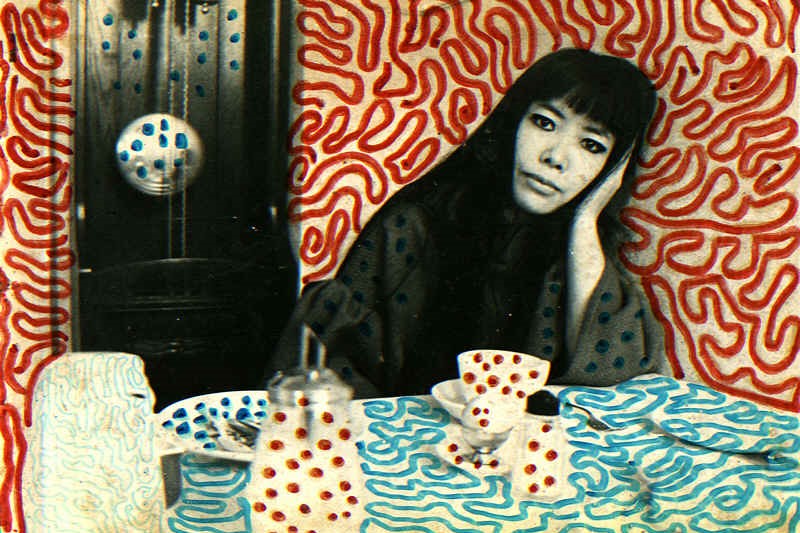
Kusama experienced this feeling for the first time as a child when she began having hallucinations. She saw surrounding patterns, shapes, and colors that seemed to engulf her. She described how patterns on a tablecloth would suddenly spread to the walls, ceiling, and floor, and then to her body, leading to a sense of being 'obliterated' by the world around her. This experience became the foundation of her artistic philosophy and a primary motif in her works.
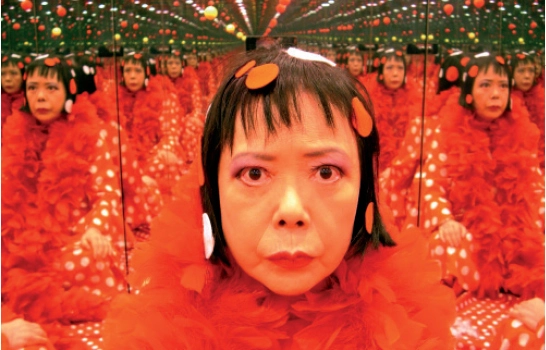
Kusama describes her works as an attempt at 'the reverse of self-obliteration,' where art becomes a tool for controlling and understanding this fear. In her numerous statements, the artist emphasized that her works are an attempt to capture infinity and come to terms with it, to transform fear into something understandable and beautiful. For Kusama, art was a way to integrate these experiences with her life and consciousness, allowing her to maintain her identity in the face of overwhelming infinity.
The artist often referred to infinity as an 'absolute space' where time and matter become irrelevant. Her works, filled with repetitive motifs, are an attempt to understand and come to terms with this reality. Kusama believed that art allows for the expression of deep fears and their transformation into something that can be understood and accepted. In this way, her works not only reflect her own experiences but also invite viewers to introspection and reflection on their own place in the infinite universe.
Depersonalization
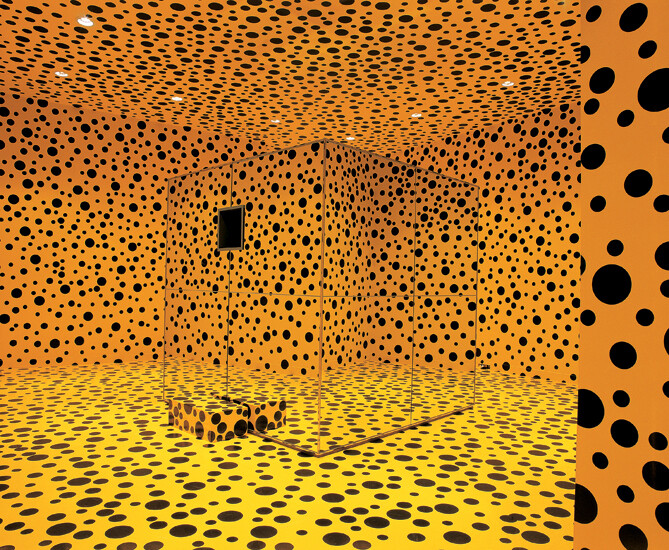
One of the most suggestive examples of this theme is the installation 'Infinity Mirror Room – The Souls of Millions of Light Years Away' (2013). In this work, Kusama created an enclosed space where mirrors reflect countless lights, creating the illusion of endless space. The viewer, entering the room, experiences a sense of immersion in infinity, where their own figure seems to fade into an endless number of reflections. It is an almost metaphysical experience in which the individual becomes part of a larger, unknowable whole.
Philosophically, Kusama's works reveal the paradoxical aspect of depersonalization: the fear of losing the self and the simultaneous fascination with the possibility of transcendence. In the face of infinity, the self loses its distinct contours, which can be terrifying, but at the same time offers a sense of unity with the cosmos. Despite her personal fears, Kusama sought in art a way to understand and come to terms with these experiences, creating works that invite the viewer to introspection and reflection on their own place in the universe.
Fear, Trauma, and Sexuality
'I began making penises in order to heal my feelings of disgust towards sex. Reproducing the objects, again and again, was my way of conquering the fear. It was a kind of self-therapy, to which I gave the name "Psychosomatic Art."'
「私は性行為への嫌悪感を癒すためにペニスを作り始めました。それを繰り返し作ることで、恐怖を克服する方法でした。それは私が『心身症の芸術』と名付けた自己治療の一種でした。」
— Yayoi Kusama
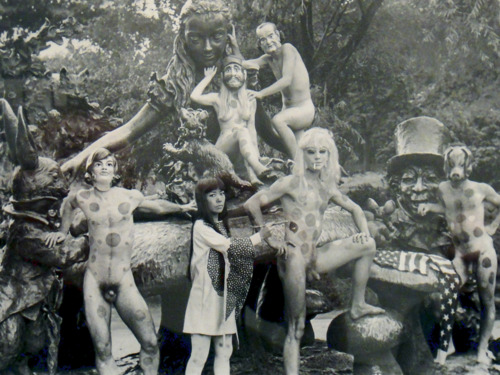
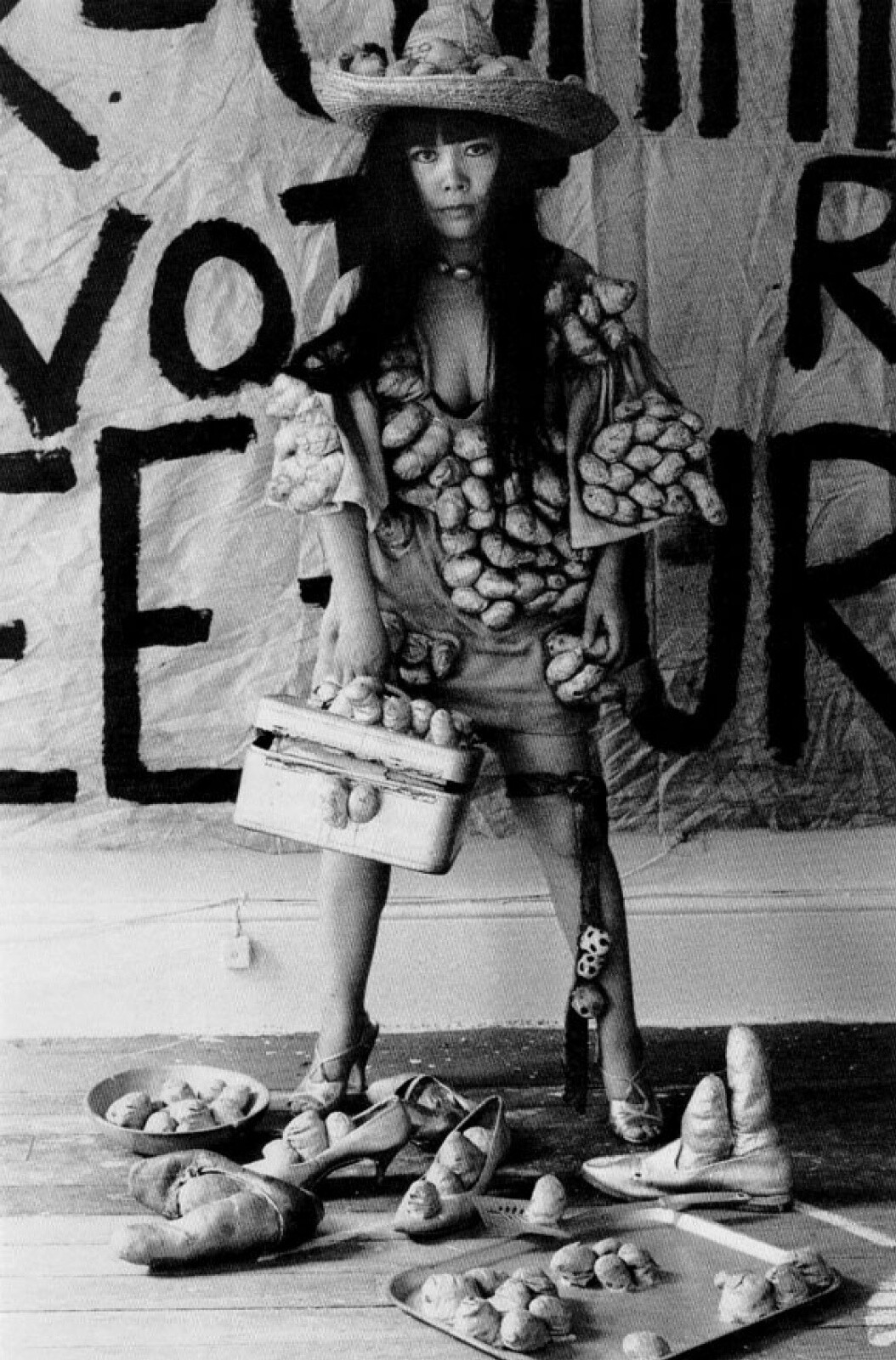
Kusama's works from this series are examples of her approach to art as a form of therapy, which she called 'Psychosomatic Art.' In her work, sexuality is presented as something both grotesque and absurd, illustrating her ambivalent attitude towards this aspect of life.
Through her art, Kusama forces the viewer to reflect on their own fears and obsessions, while simultaneously offering a space for their taming and understanding. In this way, her works become not only an expression of personal struggles but also a universal commentary on the human psyche and complex relationships with one's body and sexuality.
Legacy
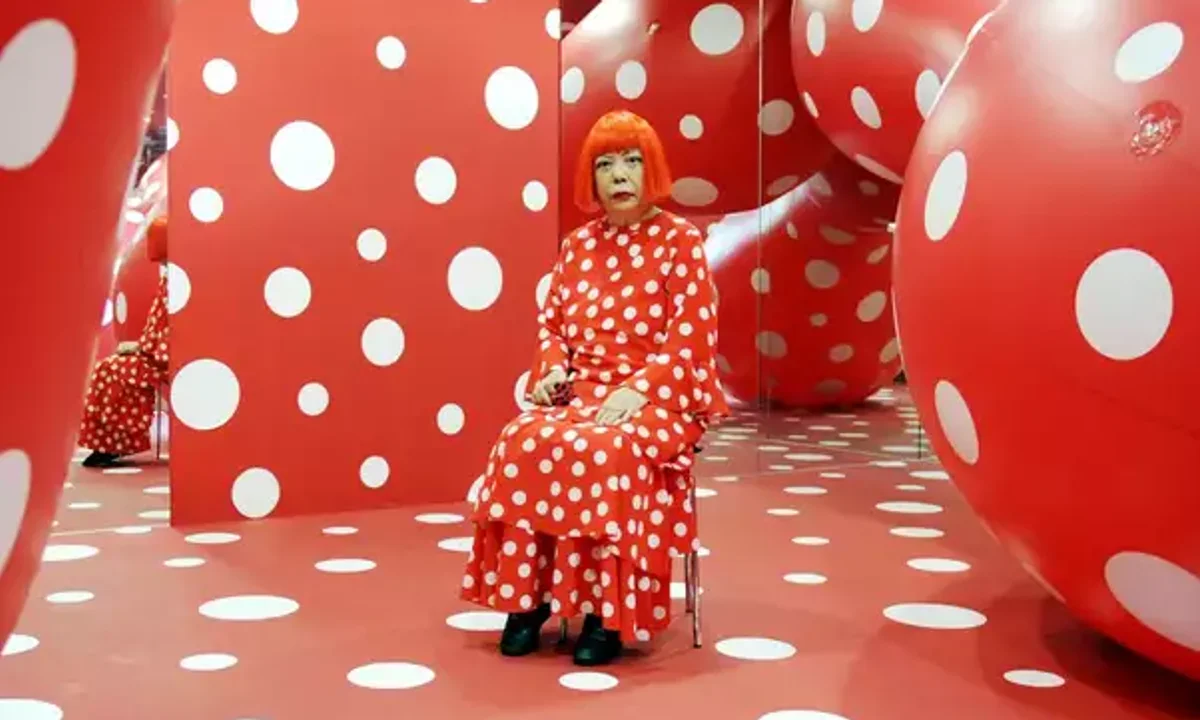
Kusama is recognized as an art icon not only for her artistic achievements but also as a symbol of strength and perseverance. Her life and work are an inspiration for artists around the world, showing how personal suffering can be transformed into art with a universal message.
>> SEE ALSO SIMILAR ARTICLES:
The Boredoms: From the Punk Underground of Osaka to a Spectacular Symphony of Chaos
Hokusai: The Master Who Soothed the Pain of Life's Tragedies in the Quest for Perfection
Shinsuke Nakamura – The Japanese Spirit of an Artist in the WWE Ring
Japanese Flower Dictionary – 15 Extraordinary Flowers and Their Symbolism in Japanese Culture
"Strong Japanese Women"
see book by the author
of the page
未開 ソビエライ
An enthusiast of Asian culture with a deep appreciation for the diverse philosophies of the world. By education, a psychologist and philologist specializing in Korean studies. At heart, a programmer (primarily for Android) and a passionate technology enthusiast, as well as a practitioner of Zen and mono no aware. In moments of tranquility, adheres to a disciplined lifestyle, firmly believing that perseverance, continuous personal growth, and dedication to one's passions are the wisest paths in life. Author of the book "Strong Women of Japan" (>>see more)
Personal motto:
"The most powerful force in the universe is compound interest." - Albert Einstein (probably)
Mike Soray
(aka Michał Sobieraj)
未開 ソビエライ
An enthusiast of Asian culture with a deep appreciation for the diverse philosophies of the world. By education, a psychologist and philologist specializing in Korean studies. At heart, a programmer (primarily for Android) and a passionate technology enthusiast, as well as a practitioner of Zen and mono no aware. In moments of tranquility, adheres to a disciplined lifestyle, firmly believing that perseverance, continuous personal growth, and dedication to one's passions are the wisest paths in life. Author of the book "Strong Women of Japan" (>>see more)
Personal motto:
"The most powerful force in the universe is compound interest." - Albert Einstein (probably)
Mike Soray
(aka Michał Sobieraj)
Write us...
Ciechanów, Polska
dr.imyon@gmail.com
___________________
inari.smart
Would you like to share your thoughts or feedback about our website or app? Leave us a message, and we’ll get back to you quickly. We value your perspective!




